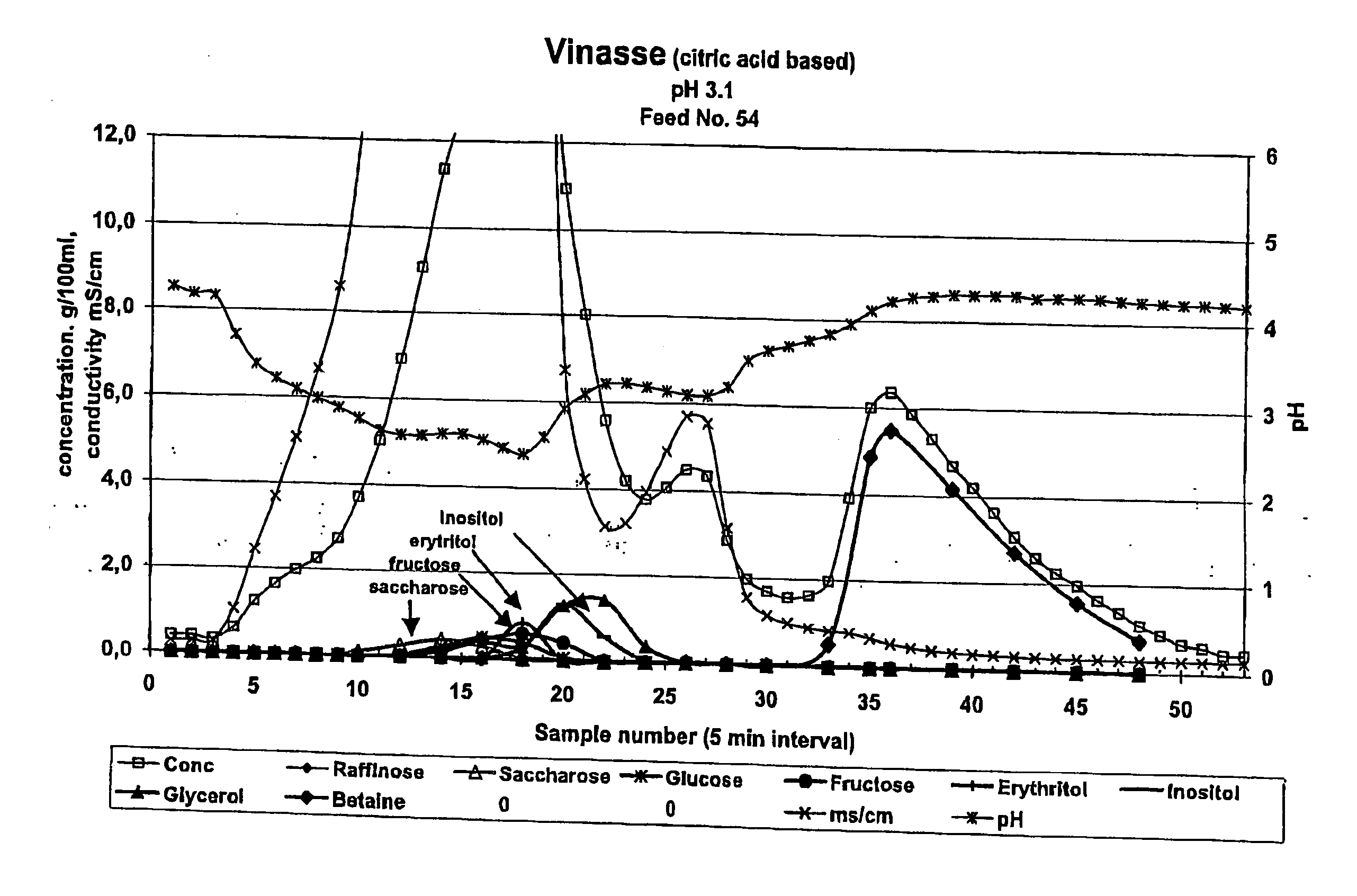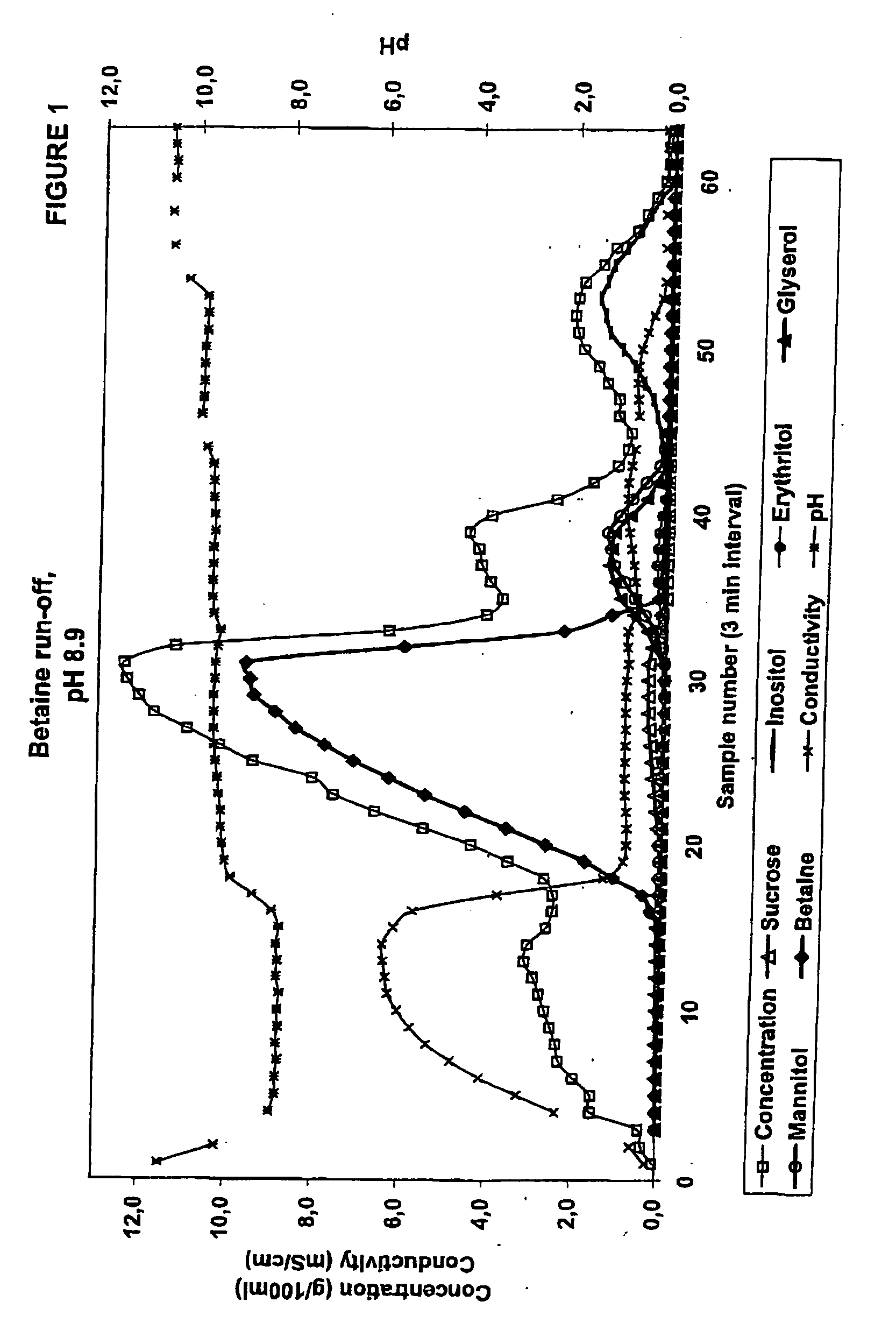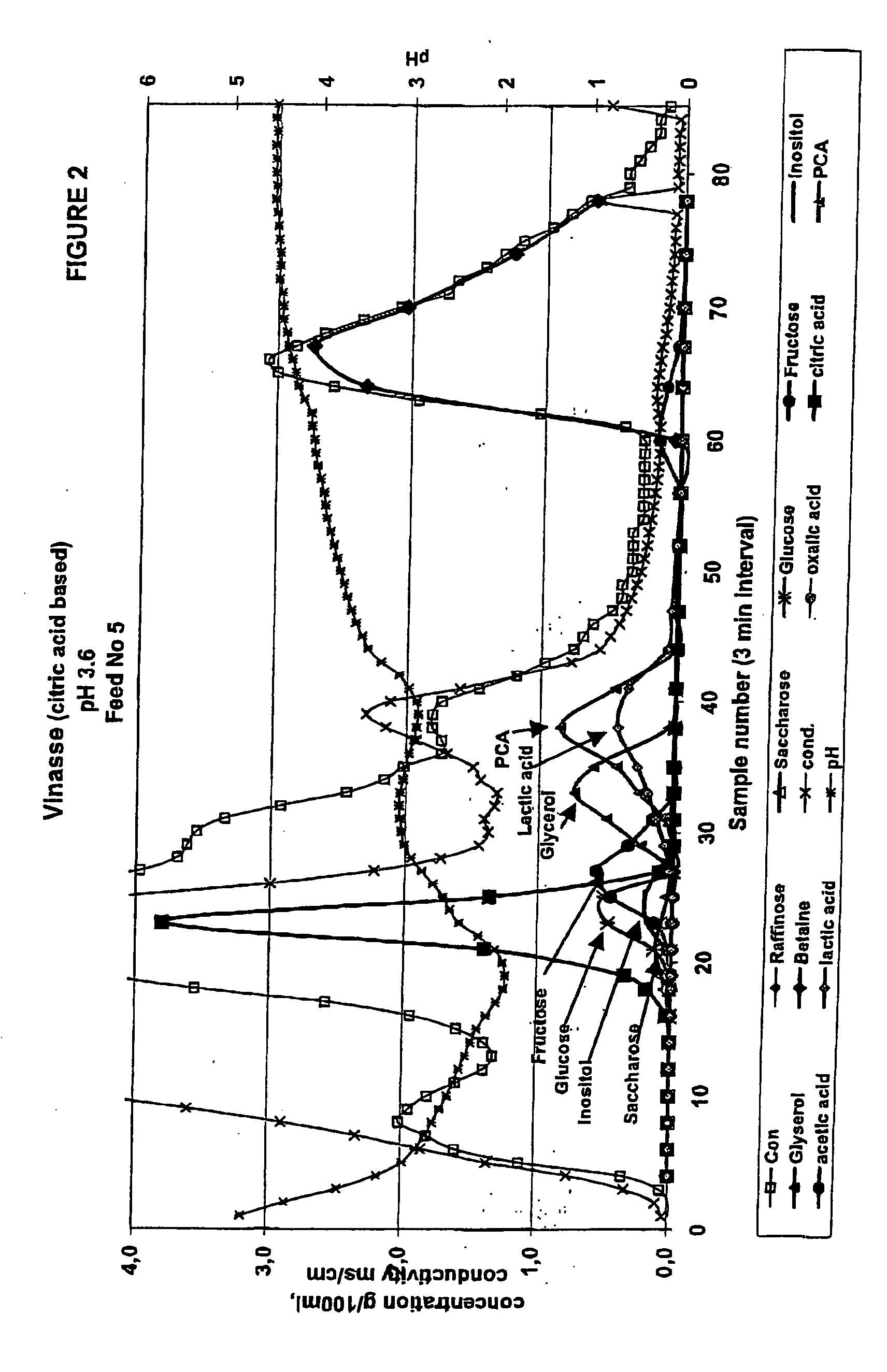Method for separating betaine
a chromatographic separation and betaine technology, applied in the direction of cation exchangers, water/sludge/sewage treatment, sucrose extraction, etc., can solve the problems of similar retention times, peak shape, and the resolution of carboxylic acids that are not satisfactory
- Summary
- Abstract
- Description
- Claims
- Application Information
AI Technical Summary
Benefits of technology
Problems solved by technology
Method used
Image
Examples
example 1
A Comparative Example Showing Chromatographic Separation of Betaine Run-off with a Weakly Acid Cation Exchange Resin in Na+-form (pH 8.9)
[0049] Betaine run-off originated from a chromatographic separation of beet molasses and contained several compounds like betaine, inositol, erythritol, mannitol and glycerol. As a feed solution it was subjected to a chromatographic separation that was performed in a laboratory chromatographic separation column as a batch process. The column with a diameter of 0.045 m was filled with an acrylic weak acid cation exchange resin (Finex CA 12 GC) manufactured by Finex Oy, Finland. The resin was an ethyl acrylate-based resin. The height of the resin was about 0.70 m. The cross-linkage degree of the resin was 6.0% DVB and the average particle size of the resin was 0.26 mm. The resin was in Na+-form. The pH of the resin was high after the manufacturing process. A feeding device was placed at the top of the resin bed. The temperature of the column, the f...
example 2
Chromatographic Separation of Vinasse with a Weakly Acid Cation Exchange Resin in H+-form (pH 3.6)
[0056] The starting liquor used for the separation was vinasse from a fermentation process of citric acid. The vinasse contained mainly betaine, glycerol, inorganic salts, and organic acids like citric acid and had approximately the following composition (% on RDS):
[0057] Betaine 17.1
[0058] Glycerol 1.8
[0059] Citrc acid 7.8
[0060] Others 73.3
[0061] The pH of the solution was 3.6.
[0062] The solution was filtered via filter by using diatomaceous earth as a filter aid. The vinasse was used as the feed solution and it was subjected to chromatographic separation. The separation was performed in a pilot scale chromatographic separation column as a batch process. The column with a diameter of 0.09 m was filled with a weak acid cation exchange resin (Finex CA 16 GC, 8% DVB, capacity 4.4 eqv / l) manufactured by Finex Oy, Finland. The resin was an acrylate based resin and the average partic...
example 3
Chromatographic Separation of Vinasse with a Weakly Acid Cation Exchange Resin in H+-form (pH 5.1)
[0069] The starting liquor used for the separation was vinasse from a fermentation process of ethanol. The vinasse contained mainly betaine, glycerol, inorganic salts, and organic acids and had approximately the following composition (% on RDS):
[0070] Betaine 13.8
[0071] Glycerol 12.3
[0072] Others 73.9
[0073] The pH of the solution was 5.1.
[0074] The solution was filtered via filter by using diatomaceous earth as a filter aid. The vinasse was used as the feed solution and it was subjected to chromatographic separation. The separation was performed in a pilot scale chromatographic separation column as a batch process. The column with a diameter of 0.09 m was filled with a weakly acid cation exchange resin (Finex CA 16 GC, 8% DVB, capacity 4.4 eqv / l) manufactured by Finex Oy, Finland. The resin was an acrylate based resin and the average particle size of the resin in sodium form was ...
PUM
 Login to View More
Login to View More Abstract
Description
Claims
Application Information
 Login to View More
Login to View More - R&D
- Intellectual Property
- Life Sciences
- Materials
- Tech Scout
- Unparalleled Data Quality
- Higher Quality Content
- 60% Fewer Hallucinations
Browse by: Latest US Patents, China's latest patents, Technical Efficacy Thesaurus, Application Domain, Technology Topic, Popular Technical Reports.
© 2025 PatSnap. All rights reserved.Legal|Privacy policy|Modern Slavery Act Transparency Statement|Sitemap|About US| Contact US: help@patsnap.com



